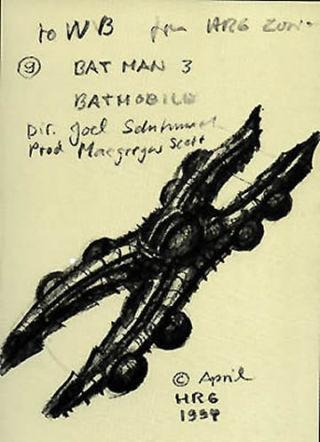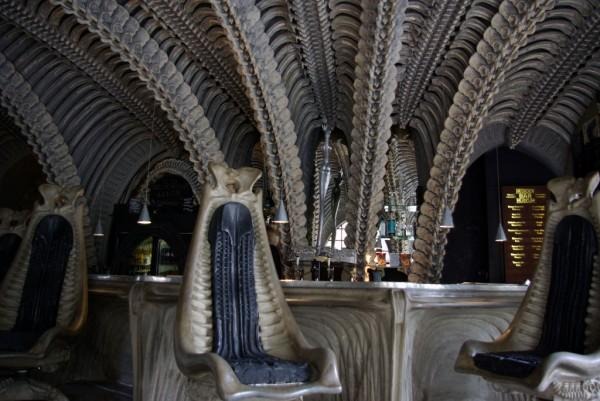HR Giger Dead At 74: A Legacy Of Aliens And Bizarre Batmobiles
Swiss surrealist artist H.R. Giger has died at the age of 74, best known for having designed the iconic Xenomorph star of the Alien movies, for which he won an Oscar. Giger's style, a blending of biological parts with mechanical elements, was dubbed "biomechanical", and became a recurring and challenging theme throughout his life. However, while he may be most memorable for designing the creature that terrorized Sigourney Weaver's Ellen Ripley, Giger's CV has many unusual twists to it.
The first movie Giger worked on was Alejandro Jodorowsky's Dune, which was never actually filmed. However, an adaptation by David Lynch used the ideas as rough concepts.

The Alien Xenomorph from the 1979 movie directed by Ridley Scott brought Giger to fame, however. He was also responsible for designing the "Space Jockey" character later explained by 2012's Prometheus, which credited the artist for his original concepts. In-between, his creatures were used for Aliens and Alien 3, for which he designed the dog-Alien hybrid.
However, Giger also created the Sil alien in 1995's Species, played by Natasha Henstridge. Giger described his concept for Sil as "an aesthetic warrior, also sensual and deadly, like the women look in my paintings."
Some of his work was more esoteric, however. Giger designed a Batmobile for 1995's Batman Forever, produced by Tim Burton, which went unused; the car resembled some nightmare starfish, with eight wheels and an outstretched biomechanical chassis.

Meanwhile, his designs for furniture featured at two officially-sanctioned bars, in Gruyères and Chur in Switzerland, sold for a limited period though now strongly sought-after by collectors.
Certain items are on show at the official HR Giger museum, housed at the Château St. Germain which the artist bought in 1998. The museum is run by Giger's wife, Carmen Maria Scheifele Giger, who survives the artist.
